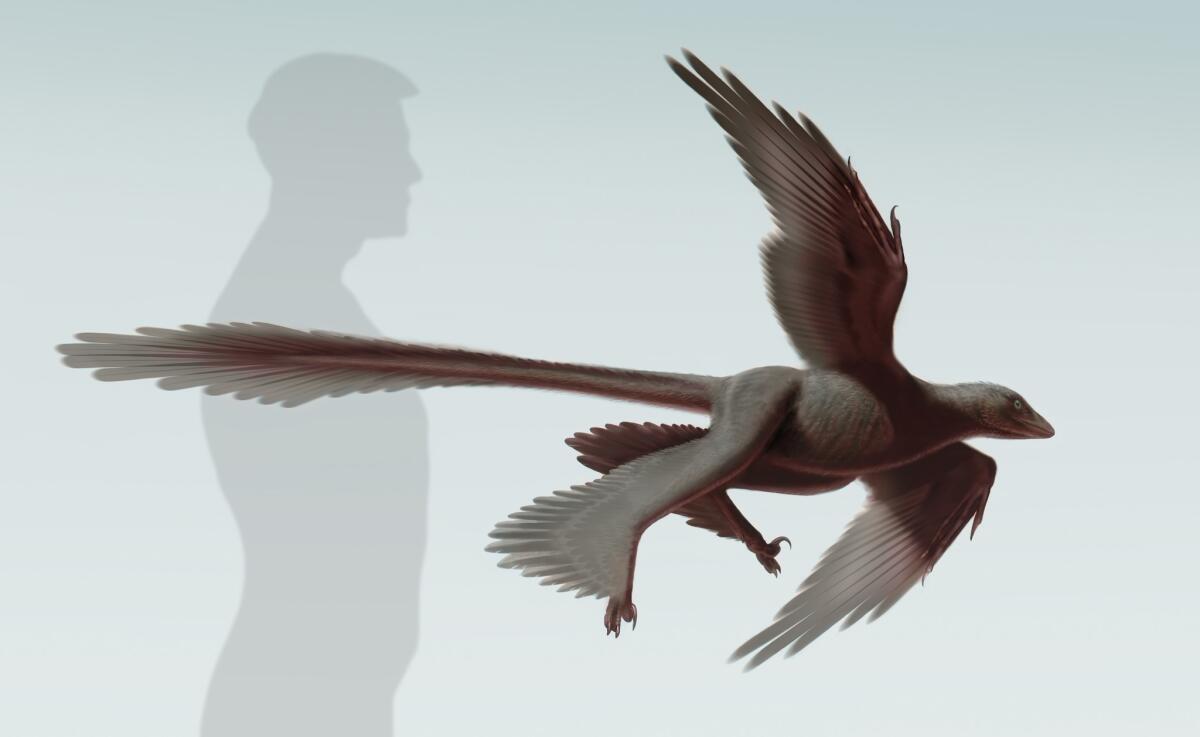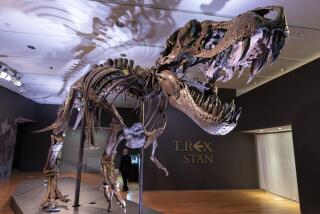That’s no bird: This ‘four-winged’ dinosaur looked like an airplane

- Share via
A remarkable new fossil of the largest “four-winged” flying dinosaur with dramatic long feathers reveals a design more like a plane than a bird, a team of scientists says.
Most “four-winged” flying dinosaurs, like the Microraptor, were relatively light. But the new fossil, named Changyuraptor yangi, described in the journal Nature Communications, was a relatively large predatory flier, said project leader Luis Chiappe, a paleontologist at the Natural History Museum of Los Angeles County.
“Flying dinosaurs were not limited to small guys,” Chiappe said in an interview. “It helps us understand the mechanics of their flight.”
The dinosaur, discovered in China’s Liaoning province, lived about 125 million years ago. Some of its tail feathers were nearly a foot long – the longest ever seen on a flying dinosaur, Chiappe said.
These “four-winged” dinosaurs get their name from their heavily feathered hind legs, which scientists think may have helped them to maneuver. This flying dinosaur wasn’t a bird, but it was probably a cousin to early birds like Archaeopteryx — a strange, winged creature that sported “feathered trousers” on its hind legs. The findings support the idea that the origin of flight may have preceded the origin of birds, the researchers said.
Though C. yangi doesn’t compare to the largest-known ancient bird, it’s the biggest known member of the four-winged crowd. It weighed in around 9 pounds – a Western gull, by comparison, weighs around two pounds. Microraptor was probably around the same size. That’s because, when flying, having as little mass as possible enables a creature to take off quickly or land without splatting into the ground.
“Flight is a very expensive business,” Chiappe said. A creature doesn’t want to be dragging a lot of extra baggage around — it is costly, evolutionarily speaking.
But even though C. yangi was massive compared with other four-winged dinosaurs, it seemed to get around its weight problem with a special body plan. Rather than having a short, stubby tail like a modern bird, it had a long tail with the longest feathers at the tip, giving it a profile like a modern jet plane.
The feathered flier probably used the tail to adjust its pitch – whether its “nose” was pointing up or down. That’s similar to how an airplane uses its long tail, which is particularly important in safe landings for massive flying objects. (Airplanes typically adjust their pitch for safe landings – that’s why they seem to touch down with their noses pointing up.)
Indeed, you could say this dinosaur was tail-ored for flight.
Love dinosaurs? Follow @aminawrite for more news from the ‘lost world.’






